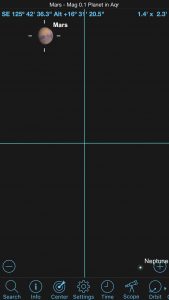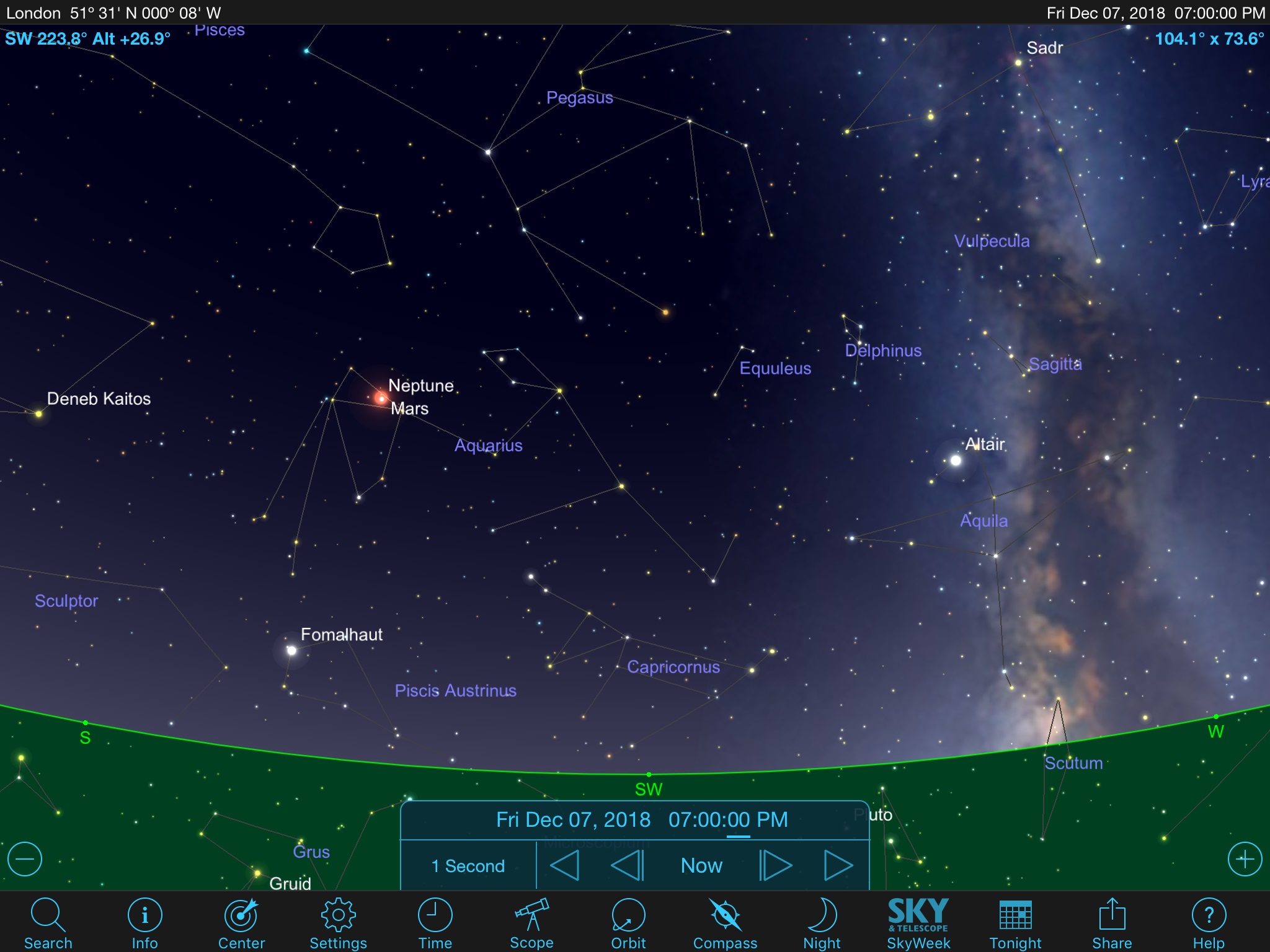
Despite not being a high power telescopic view, seeing many worlds in the sky can still be an amazing sight. Taken in Mozambique in 2015, Mars, Jupiter, the Moon and Venus in the pre-dawn sky. Mercury failed to clear the palm trees before sunrise.
The ability to observe more than one celestial body simultaneously in the eyepiece is something that has always appealed to me. Whether that is the Lagoon Nebula (M8), the Triffid Nebula (M20) and open cluster M21 in Sagittarius, or open clusters M46 and M47 in Puppis, there really is something extra special about seeing more than one object at the same time. While those DSO arrangements are set from year to year, the dynamic solar system also offers many wonderful temporary alignments in the form of conjunctions.

At around 14:30 universal time, Mars and Neptune will be only 2 arcminutes apart. Source: Sky Safari 5 Pro
While I sometimes think the term conjunction is used a little too loosely with planetary bodies appearing vaguely close to each other from our perspective, every so often these alignments are such that these nearby worlds can be seen together using a reasonable amount of magnification where there is the prospect of some detail being seen. One particularly memorable conjunction was August 17th, 2012 when Mars and Saturn were separated by just less than 3 degrees. This meant I was able to use a low power eyepiece (19x) with my 4” refractor and see both worlds at once. However, while clearly non-stellar, not much surface detail was visible. Which is why the conjunction in December is so exciting.
On December 7th, 2018, Mars and Neptune will appear particularly close with the minimum angular separation of only around 2 arcminutes, though absolute closest approach occurs around 14:30 Universal Time. However, even at around Astronomic Dusk at 18:00 in the UK, the separation has only increased to around 5 arcminutes, so magnification available will be seeing limited, meaning surface detail on the 8.8” Martian disc (magnitude +0.1) will be visible and Neptune at 2.3” (magnitude +7.9) will be distinctly non-stellar despite lying almost 4.5 billion km away.
As someone who mainly uses star hopping to hunt my celestial quarry under the light polluted skies of London, the prospect of having a bright marker in the form of Mars to find Neptune is just another added benefit on this extremely close conjunction.

Looking south-west at 19:00 UK time from London, Mars and Neptune will be around 30 degrees altitude. Source: Sky Safari 5 Pro
Whether you have a telescope or binoculars, this is an opportunity that should not be missed.
Fingers crossed for clear skies.





